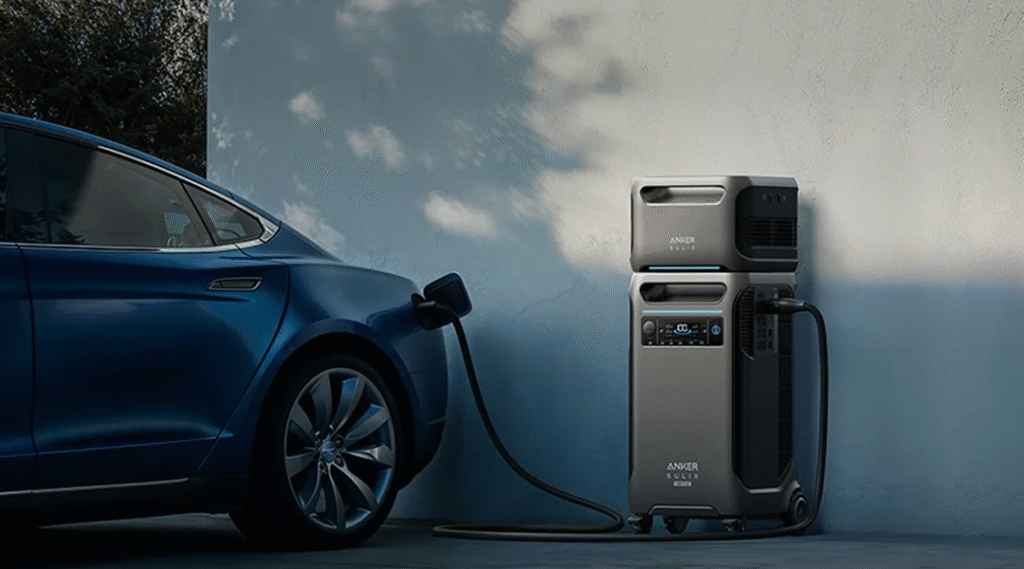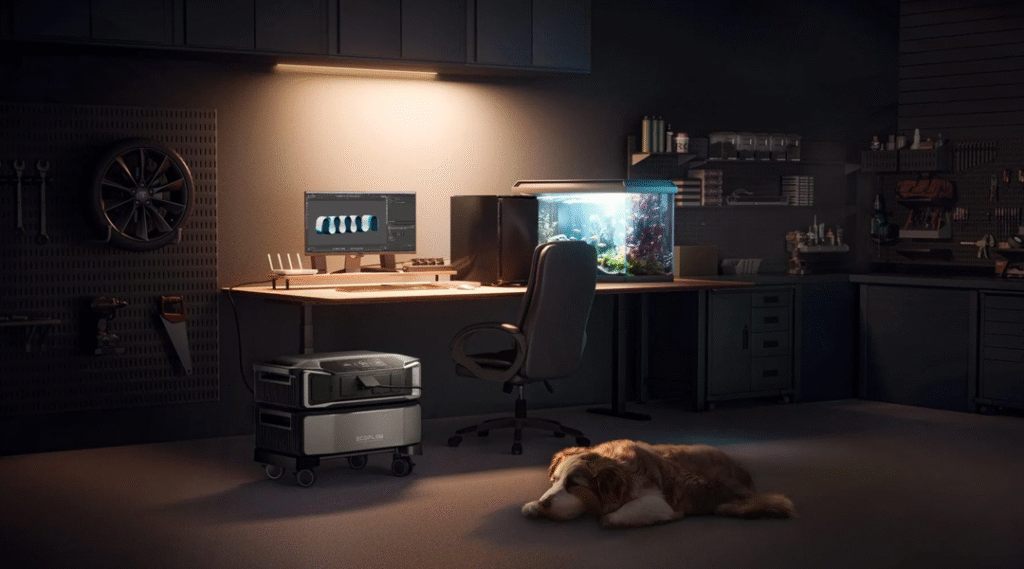As whole-home battery systems edge into mainstream use, two heavyweight contenders rise to the top: Anker’s SOLIX F3800 Plus and EcoFlow’s DELTA Pro Ultra. Both are engineered for multi-day outages, solar-first recharge, and scalable installations — but their technical choices and real-world tradeoffs differ in ways that matter to installers, emergency-prepared homeowners, and off-grid planners. Here’s a focused, technical comparison plus practical guidance on which makes more sense depending on your needs.
Quick verdict
If you want maximum expandable capacity and turnkey whole-home integration on a modular budget, SOLIX F3800 Plus is compelling; if you need higher single-unit energy, higher sustained AC output, faster generator/EV-pile charging, and IP-rated hardware, DELTA Pro Ultra pulls ahead.
Core technical comparison
| Spec / Capability | Anker SOLIX F3800 Plus | EcoFlow DELTA Pro Ultra |
|---|---|---|
| Base usable capacity | 3,840 Wh (LFP). | 6,144 Wh (LFP). |
| Expandability (system) | Up to 6 expansion batteries (3.84 kWh each) → ~53.8 kWh system. | Scales with DPU batteries to 30 kWh per inverter (single) and up to 90 kWh across a multi-inverter system. |
| Continuous AC output | Up to 6,000 W (240V support; generator bypass options). | 7,200 W continuous (scales to 21.6 kW with multiple inverters). |
| AC surge output | N/A (manufacturer details based on config), 6 kW practical. | 10.8 kW surge. |
| Max solar input | Up to 3,200 W (dual MPPT inputs). Claimed “100% recharge in 1.5 hr” under ideal setup. | High/Low-PV design supports ~5.6 kW per inverter (up to 16.8 kW multi-inverter), and EcoFlow advertises combined high PV input to recover a day’s usage in ≈60 minutes. |
| Battery chemistry & cycle life | LFP, rated 3,000+ cycles. | LFP, 80% capacity after ~3,500 cycles. |
| IP / outdoor rating | Not prominently IP-rated for outdoor exposure (install per manual). | IP54, better suited to non-perfectly sheltered installs. |
| Fast charging (grid/generator) | AC charging ~1,800 W max; generator bypass up to 6,000 W with adapter. | Industry-fast charging up to 8,800 W (generator / EV pile) — EcoFlow highlights multi-hour top-ups in ~2 hours for dual packs. |
| Integration & transfer | Designed for Home Power Panel / transfer switch, auto backup features (storm guard). | Works with EcoFlow Smart Home Panel 2 for <20 ms auto switchover and UPS modes (online UPS option). |
(Numbers are vendor-published; verify site specs for your final procurement.)

Practical implications
- Single-unit vs multi-unit strategy — EcoFlow gives you a bigger single battery (6.1 kWh) which simplifies floor space and inverter count for moderate whole-house loads. Anker’s 3.84 kWh block is smaller but designed to be stacked many times; that makes the F3800 Plus a strong choice where you plan to scale from modest backup to full-home autonomy over time.
- Solar-first households — EcoFlow’s higher PV input per inverter and High/Low-PV architecture mean faster solar recharge and better use of diverse panel arrays (roof + portable). If your goal is reclaiming a day’s energy from a single hour of sun (as EcoFlow markets), DELTA Pro Ultra offers that headroom. Anker’s 3.2 kW solar input is still fast, but multi-unit scaling is needed to match EcoFlow’s peak input.
- High continuous loads & legacy 240V appliances — Both systems support 120/240V outputs and EV/RV charging, but EcoFlow’s 7.2 kW continuous output and higher surge headroom make it easier to run large HVAC or electric ovens on fewer inverters. Anker can hit 6 kW with bypass and multi-unit pairing; it’s sufficient for many homes but closer to the edge for sustained large loads.
- Durability & outdoor installs — EcoFlow’s IP54 rating gives more flexibility for garage/porch installations. Anker’s design is robust but installation should follow indoor / sheltered guidelines.
- Charging strategy (grid/generator/EV charger) — If you plan to top up quickly with a generator or EV charger, EcoFlow’s advertised up to ~8.8 kW charging wins. Anker supports generator bypass and respectable AC charging, but at lower peak charge rates.
Recommendation by use case
- Modular future-proof home backup (grow over years): Anker SOLIX F3800 Plus — easy plug-and-play expansion to large kWh systems and simpler per-module economics.
- High-power, solar-first installations wanting fast recovery: EcoFlow DELTA Pro Ultra — larger single-battery capacity, higher continuous output, more PV headroom and faster generator/EV charging to minimize downtime.
- Installer note: Both integrate with smart home panels and support sub-panel / transfer switch workflows; choose EcoFlow where IP rating and top-end charging are priorities, and Anker where staged expansion and lower per-module cost matter.
Pick by your planning horizon
Both systems reflect mature LFP design and industrial thinking. If you want single-box muscle and fastest solar/generator recovery, EcoFlow’s DELTA Pro Ultra is the technical leader. If you prefer scalability, simpler phased investment, and a solution built around stacking validated modules for whole-home timelines, Anker’s SOLIX F3800 Plus is the more modular choice. Either way, confirm site-specific inverter counts, transfer switch wiring, and local code/permits with an installer before purchase.
More articles for the similar topic:
Anker SOLIX Showdown: F3800 Plus, F3000 and F2000 Compared for Home Backup
Anker SOLIX F3800 Plus: Whole-Home Backup or Overpriced Power Station?
Home Energy Storage: A Comprehensive Deep Dive
The Future of Energy Storage: Challenges, Solutions, and Emerging Trends
As for in-depth insight articles about AI tech, please visit our AI Tech Category here.
As for in-depth insight articles about Auto Tech, please visit our Auto Tech Category here.
As for in-depth insight articles about Smart IoT, please visit our Smart IoT Category here.
As for in-depth insight articles about Energy, please visit our Energy Category here.
If you want to save time for high-quality reading, please visit our Editors’ Pick here.



